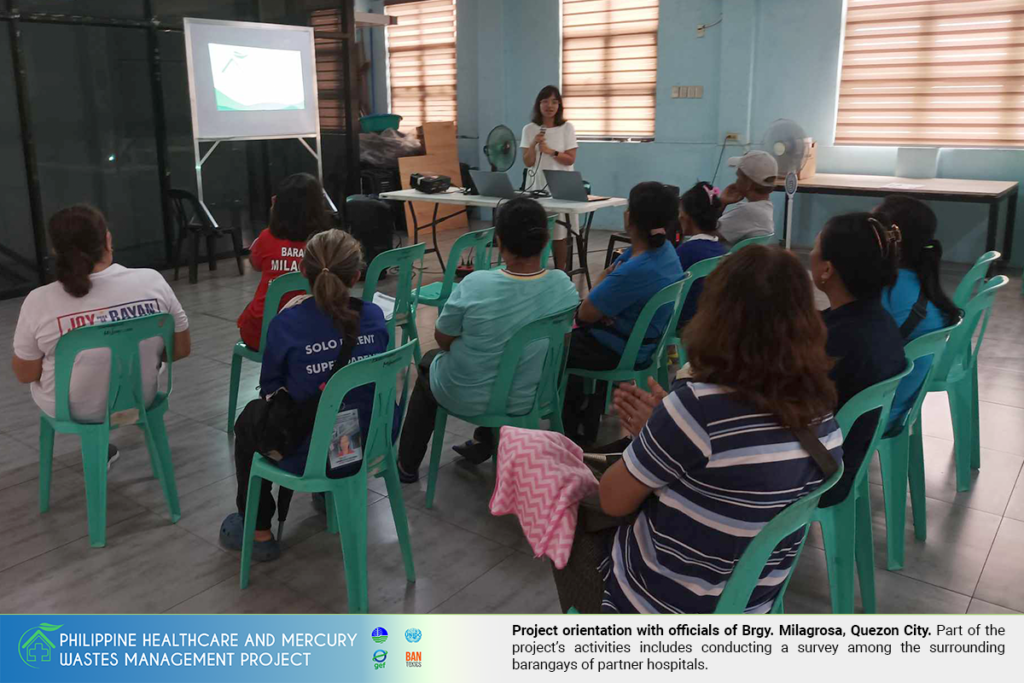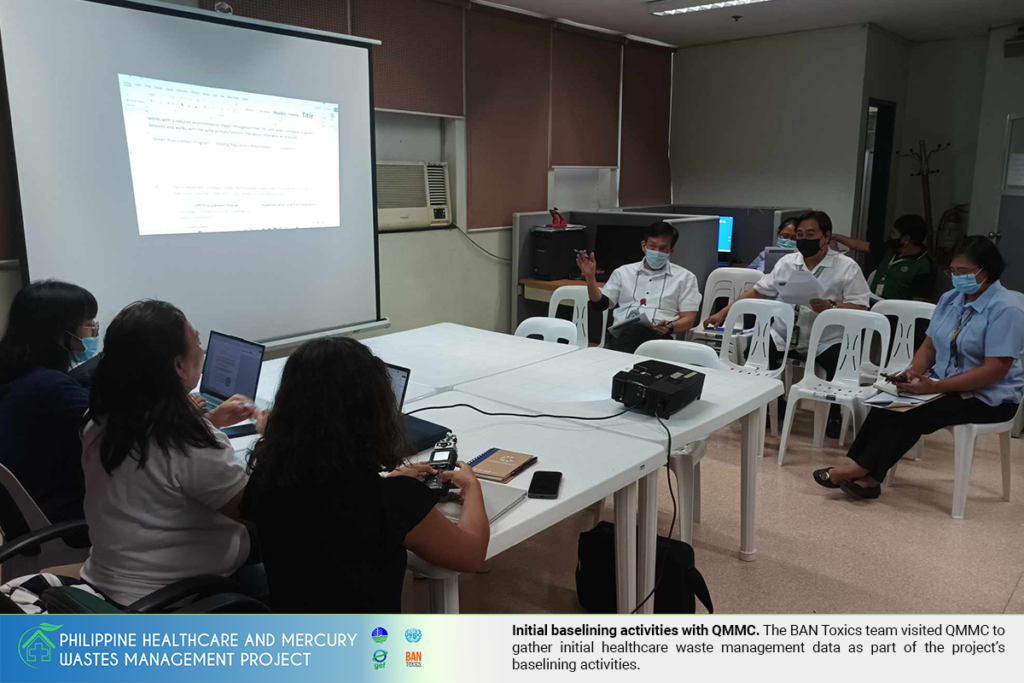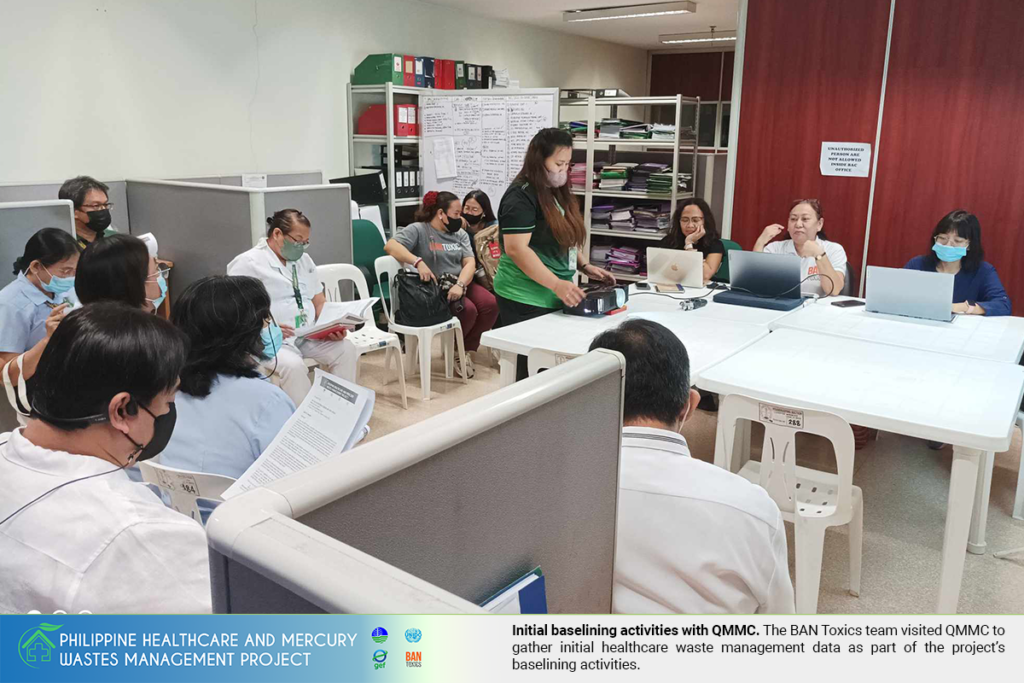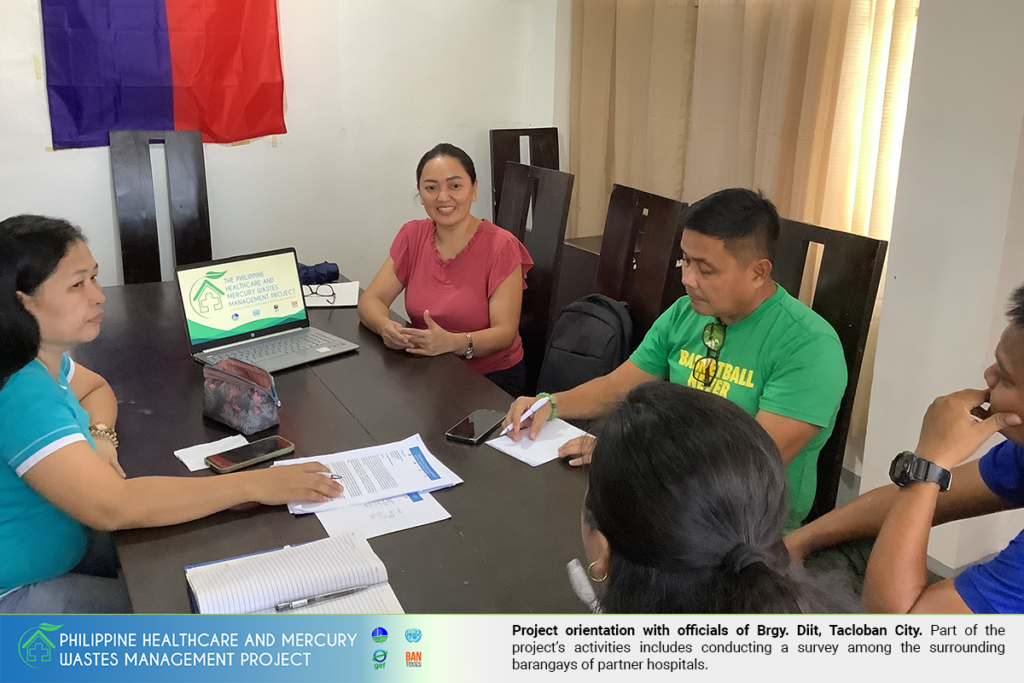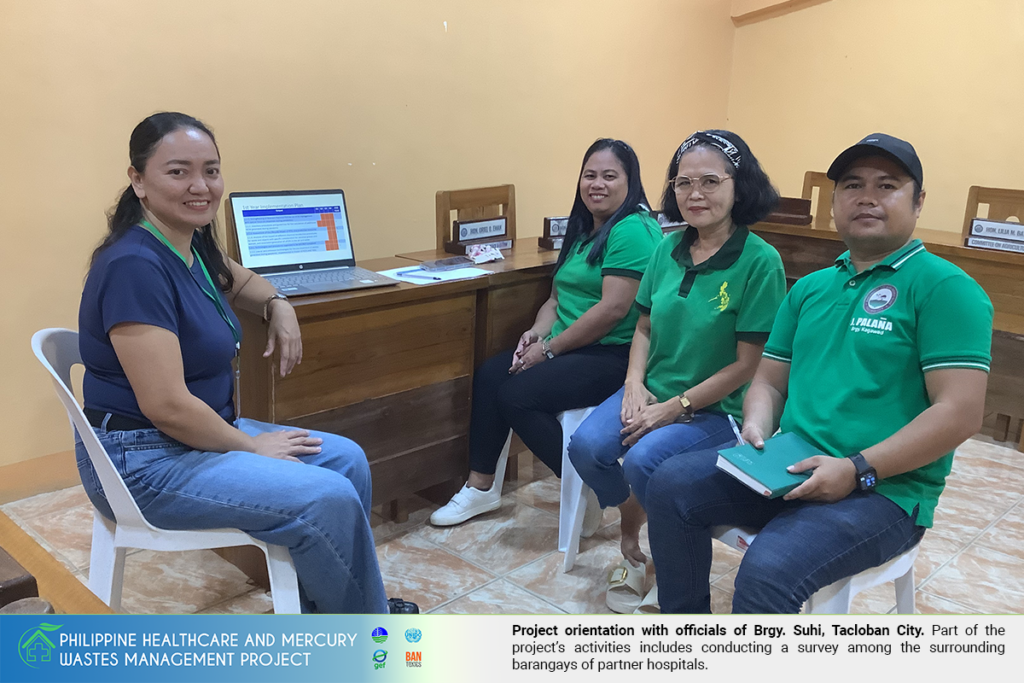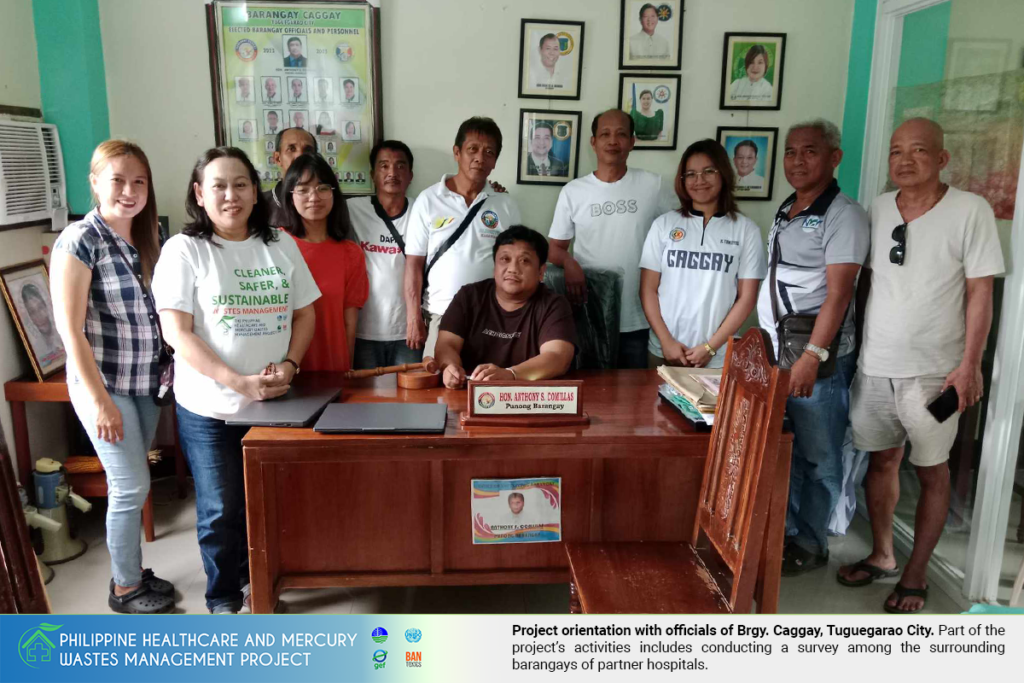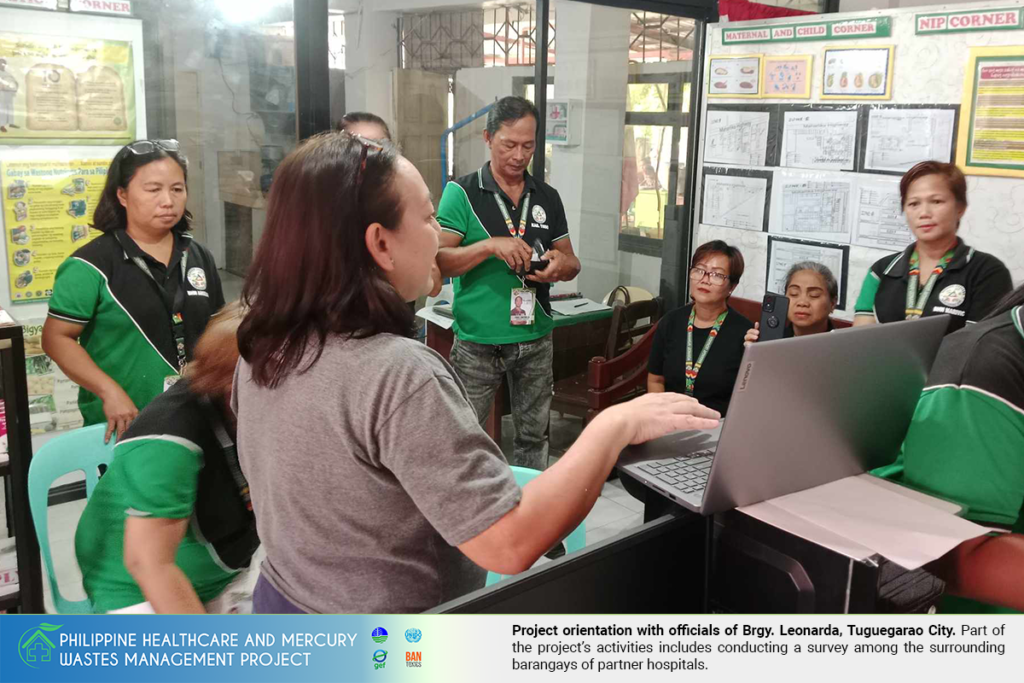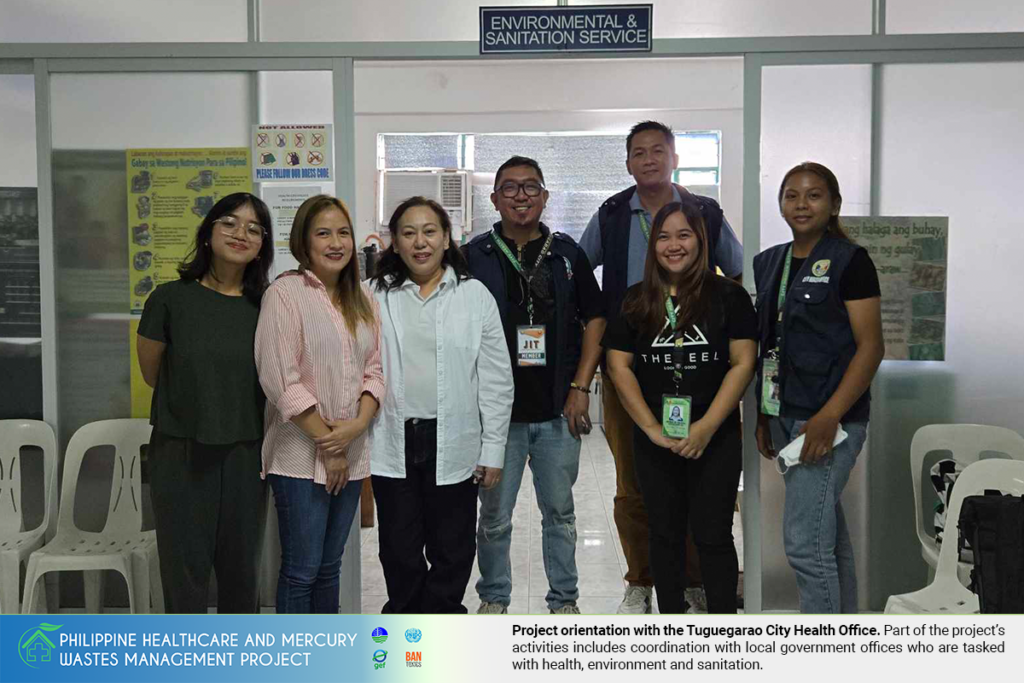Following the successful inception meetings held between May and June 2024, the Philippine Healthcare and Mercury Wastes Management Project (PHCWMP) kicked off a series of consultations and data-gathering activities with its partner hospitals and their surrounding communities.
Held at Eastern Visayas Medical Center (EVMC) in Tacloban City, Quirino Memorial Medical Center (QMMC) in Quezon City, and Cagayan Valley Medical Center (CVMC) in Tuguegarao City, these activities conducted from August to September are part of initial baselining efforts to gather data on key issues related to healthcare waste management, which will provide the basis for the project’s interventions.
“As with every project we undertake, we rely heavily on research to ensure that any intervention is approached scientifically. For the healthcare waste project, we aim to identify the most environmentally sound solutions to address the waste-related issues that our hospitals and other healthcare facilities face,” said Jam Lorenzo, PHCWMP Project Manager and BAN Toxics Deputy Executive Director.
Officially launched on December 6, 2023, the PHCWMP aims to reduce the release and emissions of hazardous chemicals in healthcare waste through environmentally sound practices. The five-year project, funded by the Global Environment Facility (GEF), is being implemented by the United Nations Industrial Development Organization (UNIDO) in partnership with the Department of Environment and Natural Resources – Environmental Management Bureau (DENR-EMB) as the national lead agency, with environmental NGO BAN Toxics serving as the executing entity.
Based on initial data gathered by the project’s Community Development Team, led by BAN Toxics, QMMC generated a total of approximately 907.78 tons of waste in 2023, of which 547 tons, or about 60%, were hazardous waste. EVMC, on the other hand, generated about 409.56 tons of waste in the same year, of which 217.78 tons, or approximately 53%, were hazardous waste. Waste generation data from CVMC has yet to be collected as of this writing.
The three hospitals have limited capacity to treat their hazardous waste and rely on third party service providers. According to Lorenzo, the PHCWMP aims to enhance the treatment capacity of partner hospitals by either directly providing access to technologies or facilitating access through green financing schemes.
Hazardous healthcare waste encompasses a broad range of materials, including used needles and syringes, soiled dressings, body parts, diagnostic samples, and blood—categorized as M501 or pathological and infectious waste—as well as chemicals, pharmaceuticals, medical devices, and radioactive materials. Wastes containing mercury, categorized as D407 waste, can also be found in healthcare facilities, originating from busted fluorescent lamps and medical measuring devices such as thermometers and sphygmomanometers. Both EVMC and QMMC still have a stockpile of D407 waste which the project will also address.
Another key issue identified by the partner hospitals that the project will tackle is the limited awareness in waste segregation among patients and their caregivers. As part of the project’s initial efforts, the BAN Toxics team conducted surveys in the surrounding barangays of the partner hospitals—6 in QMMC, 7 in CVMC, and 6 in EVMC. These surveys were carried out due to the likelihood that these barangays are home to patients of the hospitals, aiming to gather information on their level of awareness regarding healthcare waste and segregation.
The team also met with the CIty Environmental and Natural Resources Office (CENRO) of Ilagan City, Isabela, which is also a partner of the project.
“The issue of healthcare waste management impacts everyone and as such, collective efforts from multiple stakeholders, including communities, are crucial to ensuring effective and sustainable solutions,” Lorenzo said.

